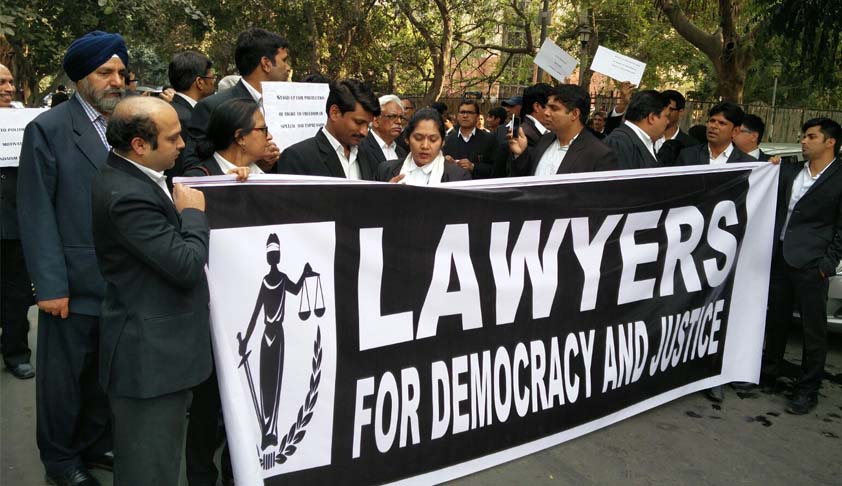Ensuring Workplace Safety for Women: A Call to Action Sep 3, 2024

In a tragic incident that has reverberated across India, a 31-year-old trainee doctor was brutally raped and murdered in the seminar room of RG Kar Medical College and Hospital in Kolkata. This horrifying crime has not only shattered a family but also spotlighted the critical gaps in workplace safety, particularly for women in healthcare.
The Incident: A Detailed Account

In June 2023, the body of a 31-year-old postgraduate trainee doctor in gynaecology was found in a seminar room at RG Kar Medical College and Hospital. Initial investigations revealed she had been sexually assaulted and then murdered. The brutality of the crime sparked nationwide outrage, leading to protests and demands for justice. A hospital volunteer worker has been arrested, underscoring the urgent need for thorough background checks and enhanced security for all hospital staff, including non-medical personnel.
Current Status of the Case:
As of August 2024, here’s where things stand:
- Investigation Transfer: The case was initially managed by West Bengal police but was later transferred to the Central Bureau of Investigation (CBI) due to concerns over delays and mishandling.
- Arrests: The suspect, a hospital volunteer, remains in custody. The CBI is investigating potential accomplices and any lapses by hospital administration.
- Legal Proceedings: The Supreme Court of India is now handling the case, showing deep concern for workplace safety.
- National Task Force: Chief Justice DY Chandrachud has established a National Task Force to propose safety protocols for healthcare workers. The task force is expected to deliver an interim report in three weeks and a final report in two months.
- Hospital Security Measures: The West Bengal government has introduced new safety measures, including designated safe zones and CCTV-monitored areas.
- Ongoing Protests: Public protests continue, highlighting the urgent need for improved safety measures for women in workplaces.
- Medical Community Response: The Indian Medical Association (IMA) has organized nationwide strikes demanding enhanced security and legal protections for medical professionals.
The Incident: A Wake-Up Call

This horrific event underscores critical questions:
- Workplace Safety: How safe are workplaces, especially for women working late shifts?
- Preventive Measures: What steps are in place to prevent such crimes?
- Institutional Readiness: How prepared are institutions to respond to safety concerns?
The fact that this tragedy occurred in a hospital—a place meant for care and healing—adds a profound layer of irony and concern.
Systemic Issues Exposed:
The aftermath of this tragedy has revealed several systemic issues:
- Delayed Response: There was a significant delay in filing the initial complaint (FIR).
- Privacy Violations: The victim’s identity and photographs were leaked on social media, breaching legal and ethical standards.
- Inadequate Security: The attack highlighted the severe lack of security protocols at RG Kar Medical College.
These issues point to a broader problem: the absence of a robust, well-implemented safety framework in workplaces.
The Imperative for Change:
This tragedy highlights that workplace safety, particularly for women, is a fundamental right, not a luxury. Every employee deserves a safe working environment. As a society, we must translate our outrage into action and work towards creating secure workspaces.
Steps Towards a Safer Workplace:
Here are concrete steps to enhance workplace safety, particularly for women:
- Robust Security Infrastructure:
- Install functional CCTV cameras in all areas.
- Implement strict access control measures.
- Ensure adequate lighting, especially in less frequented areas.
- Safety Protocols and Training:
- Develop and regularly update comprehensive safety protocols.
- Conduct mandatory safety training for all employees.
- Foster a culture of vigilance and mutual responsibility.
- Emergency Response Systems:
- Install panic buttons in strategic locations.
- Establish a quick-response team for emergencies.
- Conduct regular drills to ensure preparedness.
- Safe Transportation:
- Provide secure transportation options for late shifts.
- Implement a buddy system for off-hour departures.
- Supportive Work Environment:
- Create designated rest areas and safe zones.
- Ensure adequate facilities like toilets and changing rooms.
- Foster an environment where employees can comfortably report concerns.
- Regular Safety Audits:
- Conduct periodic safety audits to identify and address vulnerabilities.
- Encourage employee feedback on safety measures.
- Collaboration with Law Enforcement:
- Build strong ties with local law enforcement.
- Conduct joint safety drills and awareness programs.
- Psychological Support:
- Provide counseling services.
- Create support groups and peer counseling programs.
- Zero Tolerance Policy:
- Enforce a zero-tolerance policy for harassment and violence.
- Ensure swift, fair investigations into all complaints.
- Technology Integration:
- Promote the use of safety apps.
- Implement AI-powered surveillance systems for early threat detection.
The Role of Leadership:
Creating a safe workplace requires committed leadership:
- Prioritize Safety: Allocate budgets specifically for safety improvements.
- Lead by Example: Follow safety protocols yourself.
- Foster Responsibility: Encourage a culture where safety is a collective responsibility.
- Ensure Transparency: Handle safety concerns openly and transparently.
Legal and Policy Framework:
The Indian government and judiciary have acted by forming a National Task Force to recommend safety protocols for healthcare professionals. However, further actions are needed:
- Strengthen Laws: Enhance protections for workers, especially women.
- Implement Stricter Penalties: Enforce harsher penalties for safety violations.
- Create Guidelines: Develop guidelines for prompt investigation of workplace crimes.
A Call to Action:

This tragedy must spur us into action. Here’s what you can do:
- Assess Your Workplace: Review the safety measures in your own work environment. Are they adequate?
- Speak Up: Report any safety lapses to management.
- Support Initiatives: Back organizations working on workplace safety.
- Stay Informed: Keep updated on safety laws and best practices.
- Be an Ally: Support your colleagues and create a safe environment for everyone.
Interactive Reflection:
Consider the following:
- What safety measures does your workplace have?
- Have you ever felt unsafe at work? What steps did you take?
- How can you contribute to making your workplace safer?
To Conclude:

The rape and murder of the young doctor in Kolkata is more than a crime; it’s a systemic failure to protect those who dedicate their lives to caring for others. As we mourn this loss, let’s channel our grief into meaningful action.
Creating a safe workplace is an ongoing commitment that requires vigilance, resources, and a collective will to change. A safe workplace is not just about physical measures but also about cultivating a culture of respect and mutual support. Let’s work together to ensure that no one has to feel unsafe at work ever again.
The time for change is now. What step will you take today to make your workplace safer?
References and Sources:
